Genre: Puzzle Developer: Brian A. Rice Inc. Publisher: Activision Players: 1 Released: 1994
Shanghai is maybe one of the oldest but still ongoing video game series in existence: Almost every platform imaginable has by now seen one version or another, from the Apple II to the Nintendo Wii. However, the Genesis version of Shanghai II has a rather intriguing and convoluted development history behind it. Let’s dig a bit into it: In 1986, Activision had landed a surprise hit with the original Shanghai on the more graphically advanced home computers of the day, especially the Apple Macintosh and the Commodore Amiga. In the wake of this unexpected success, the title was over the following two years virtually every other platform imaginable, be it handheld, console or home computer. Even the Sega Master System was graced with its own version in 1988. In 1989, Shanghai II appeared on Japanese MSX computers, as well as the TurboGrafx CD home console. But when the game was first released in the West in 1990, it had been changed a bit and was now known as Shanghai II: Dragon’s Eye. It now included more variations of the same premise, as well as an additional, new gameplay mode. Both versions were still developed by Activision. The following year, the Japanese software house Home Data Corp. created and published Dragons Eye Plus: Shanghai 3, which basically was a port of Shanghai II and released it for both the Sega Genesis and TurboGrafX CD respectively.
However, three years after that sequel had graced Japanese Mega Drives with its presence, Activision decided to port its earlier PC title Shanghai II: Dragon’s Eye for the American Genesis, handing the port over to Brian A. Rice Inc. So while 1991 had already seen the release of Dragon’s Eye Plus: Shanghai 3 in Japan, in 1994 the US would apparently receive the earlier game instead. What had happened? Well, if the lead designer of the Shanghai series over at Activision at the time, Tom Sloper, is to be believed, it’s mainly because they were unhappy with what the Japanese developers had made out of the game. According to him, marketing had decreed that Dragon’s Eye Plus had to be a numerical sequel. But the end result, in his own words, “[…] stunk: The graphics were ugly, and the game didn’t have any interesting features to add”. So, the decision was made that instead of localizing the Japanese version of the “uninteresting sequel,” Activision would port the older Shanghai II: Dragon’s Eye and make it the better game! Interestingly enough, from that point onwards sequels in the series would drop numerical references altogether.
For those of you who still don’t know what I’m talking about, Shanghai is a simple, but addictive puzzle game. In its most basic iterations, players are presented with a tower made out of 144 individual gaming stones, which are usually taken from the classic Chinese game Mahjong. Shanghai shouldn’t be confused with Mahjong itself, even though they generally use the same game pieces, since the latter is usually played by two to four players in a gameplay style reminiscent of rummy. Due to its single player nature, Shanghai is therefore often referred to as Mahjong Solitaire.
The rules to Shanghai are pretty simple. At random, the 144 game pieces (which consist of two sets of 34 matching pairs native to Mahjong, as well as two additional matching quartets) are stacked into a tower somewhat resembling a turtle. The player is now tasked to remove that stack by taking away two identical stones in each turn. Game pieces can only be selected as long as they are “open” to either the left or the right side, and as long as there isn’t another tile on top of them. While picking matching pairs is very easy at first, the game gets harder and more strategic over time. Players need to plan ahead which pairs to remove first in order to open up other tiles. If you can’t find a matching pair, a hint function highlights open tiles, but that option should be used with care. As with all Solitaire-type of games, lack of proper planning may sooner or later lead into an unsolvable dead end. Every version of Shanghai also has at least one type of undo function which allows you to take back the last step you made (Shanghai II also offers a shuffle option that allows randomly re-arranging the remaining game pieces, which gives players another chance of solving the game should they get stuck). The premise is simple, easy to learn, and highly addictive. As basic as the idea may sound, this simple tile-matching game constantly makes you want to give it at least one more try… and another… and another… until you realize it’s four a.m. and you probably should’ve gone to bed hours ago.
Shanghai II: Dragon’s Eye was originally developed for home computers, and its pedigree shows: In-game options are changed using a drop-down menu on the top of the screen, reminiscent of the toolbar of an early window-based GUIs, a little feature betraying the game’s origins as a home computer game. Also, controlling the game with a game pad is a bit awkward at first, since you have to use a cursor for gameplay. Thankfully, owners of a Mega Mouse will be glad to hear that Shanghai II is one of the few games that fully support this underused peripheral. If you play the game in an emulator, make sure to enable mouse controls, as this definitely feels more natural and smoother than using a controller (or the keyboard, for that matter). The menu is brought up by moving the cursor to the top of the screen and hitting either start on a gamepad or by pressing left and right mouse button at the same time.
Shanghai II doesn’t change anything about the basic premise of the game but instead offers more variety: more color, more sound, more tiles, more gameplay variations. Let’s start with the latter. As the original concept of Shanghai borrows its tile set from the Chinese game Mahjong, developers decided to stick to a Chinese animal theme. Consequently, Shanghai II offers to stack the 144 game pieces in 12 additional patterns, each resembling one of the animals in the zodiac: Rat, Ram, Tiger, Dragon, Dog and so on. While it doesn’t change anything about the general gameplay, the different piles offer a new challenge to the same game.
By default, each game after the start usually is set up with Mahjong tiles in the turtle pattern. If you’re not a fan of Chinese characters though, you can always change the appearance of the 144 game pieces. Shanghai II offers nine different tile variations, for example letters & numbers, card faces, representations of different sports or different flags. With each set come new animated background graphics and sounds. For example, the cards game pieces give the game a wild west saloon theme, while the fantasy world setting takes place in a medieval castle with corresponding tunes.
It becomes quickly apparent that the intention behind most of the new game pieces is to make the game more appealing to a younger audience, namely kids. For the most part, the graphics speak the same language. The alphabet tile set, for instance, has a child’s bedroom as a backdrop. The game pieces that only use pictures, like the sports, fantasy world or prehistoric themes, also may be more appealing to children than to grown-ups. Adult players will probably stick to the classic Mahjong characters at first. In order to encourage switching through the tile sets, each background becomes alive after solving the game as a reward. So there’s a certain payoff in switching out the game pieces every once in a while. Of course, fans of the original can also deactivate the background graphics altogether and play before a plain green backdrop, just like in the first game of the series. However, one should always keep in mind that switching out game pieces also starts a new game, so you should never change tile sets in the middle of a session if you still want to finish that.
In another upgrade to the original Shanghai, removing individual pairs is now accompanied by several little animations. These may literally erase or wipe out the game pieces (with an eraser or a window wiper respectively), remove them with sparkles and fireworks, or other little gimmicks. Unfortunately, these animations usually play out very slow and force you to wait until they have played out before you can proceed. Like the backgrounds, they can be turned off in the drop-down menu.
Another thing you may wish to turn off is the Sound. Each tile set comes with a single piece of corresponding music. While these usually tend to fit its appropriate theme quite well, they are for the most part rather bland, muzak-like background pieces that loop constantly. The music isn’t bad per say, at first some of them even have a nice, soothing ring to them. But since a single playthrough can easily take half an hour or more, especially if you’re an inexperienced player, most of these musical pieces tend to get very grating over the entire session.
Lastly, the Dragon’s Eye brings an entirely new kind of game to the table. Here, players (called slayer) are competing against a computer-controlled opponent (called master), each with their own set of tiles: six for the slayer, three for the master. Players gains points if they can remove two matching game pieces from the table. If they can’t, they’re forced to add one, which raises the score of the master. The game ends after all 144 stones are used up. Here, players need to think several steps ahead, trying to add game pieces to the table in a way that allows them to maybe remove them later. If a tile isn’t open, it gets flipped around, so one has to keep in memory where which stone was placed in order to properly plan strategy. Also, don’t allow the A.I. to put down its game pieces between others already on the table, since then it will automatically place them face-down and you don’t get to see it. Given that there are so many tiles in play you have to be very apt in calculating odds and remembering which pieces have been already played and which ones may still come up. If you only try to rely on luck, the A.I.-controlled master usually holds the advantage. Dragon’s Eye is therefore a very difficult strategy game. It’s a nice add-on, though other than the main attraction it fails to stand very well on its own. A proper game of Mahjong against other (human) players may have been preferable here.
As a more casual puzzle game, Shanghai is rather simplistic but nevertheless pretty addictive. It is one of those games that constantly tickles the urge of giving it just one more try. Since there isn’t any time limit, gameplay is more relaxed and thus less engaging than in other puzzle games, like Columns or Doctor Robotnik’s Mean Bean Machine. But this calm, laid-back way of playing definitely has its own charm. This is a nice little game for all ages that anyone can simply pick up and play – and before you know it, you may already have sunk an hour or more into it. For a console port, this version turned out pretty well – even if you’ll probably turn the music off after a while.
SCORE: 7 out of 10

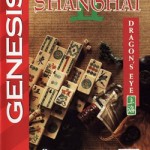
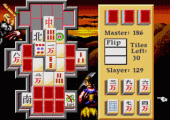
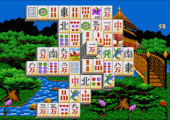
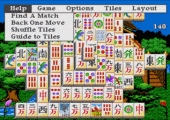
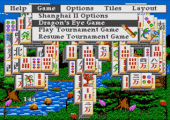
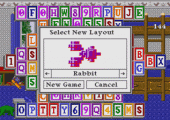
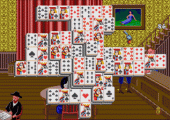
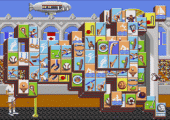
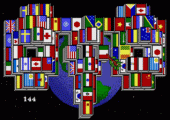
Recent Comments